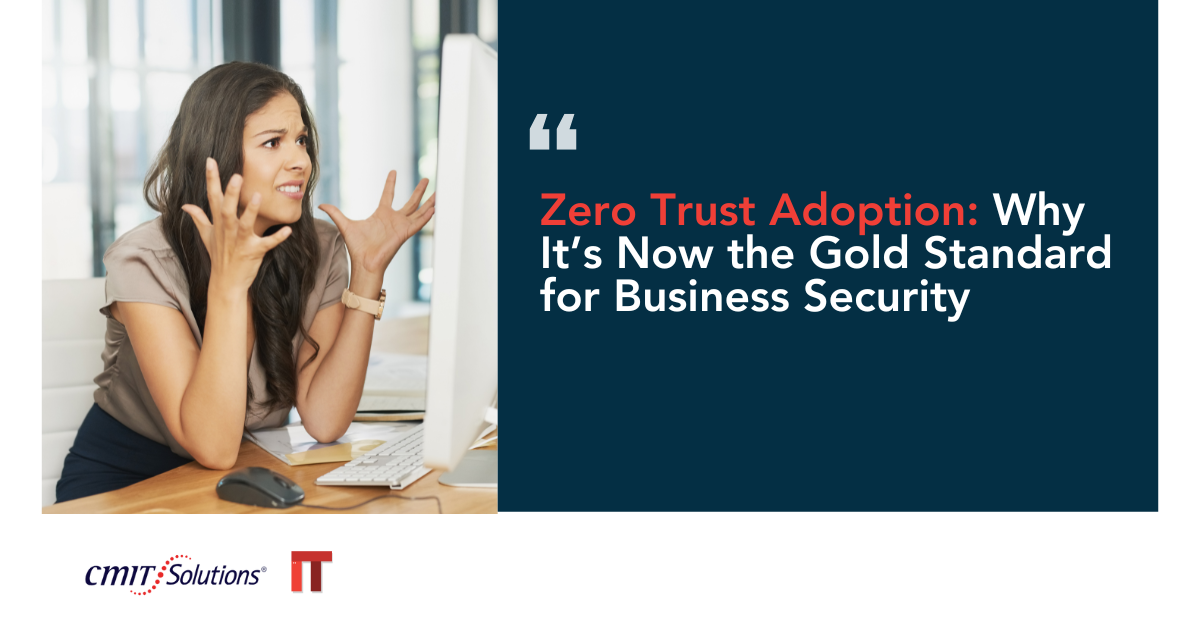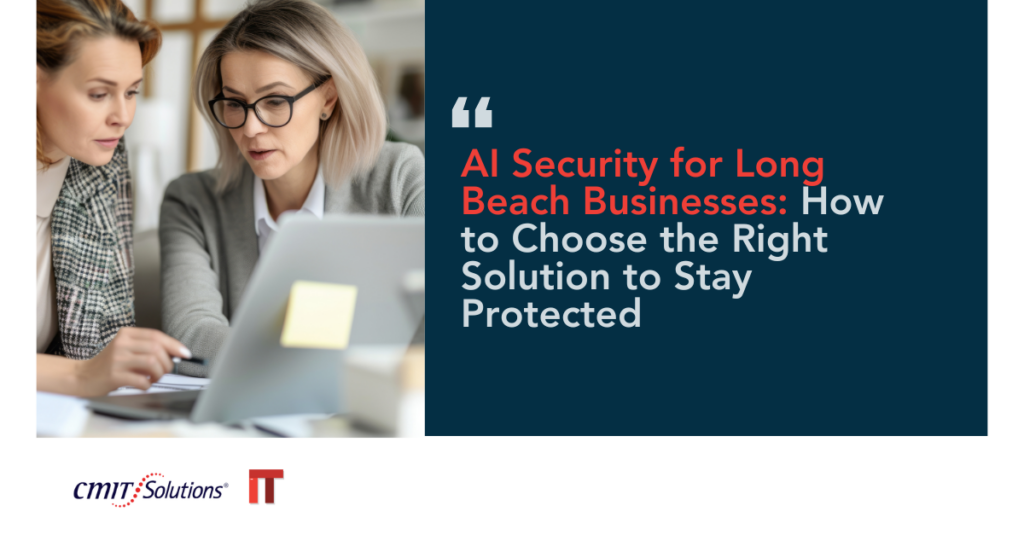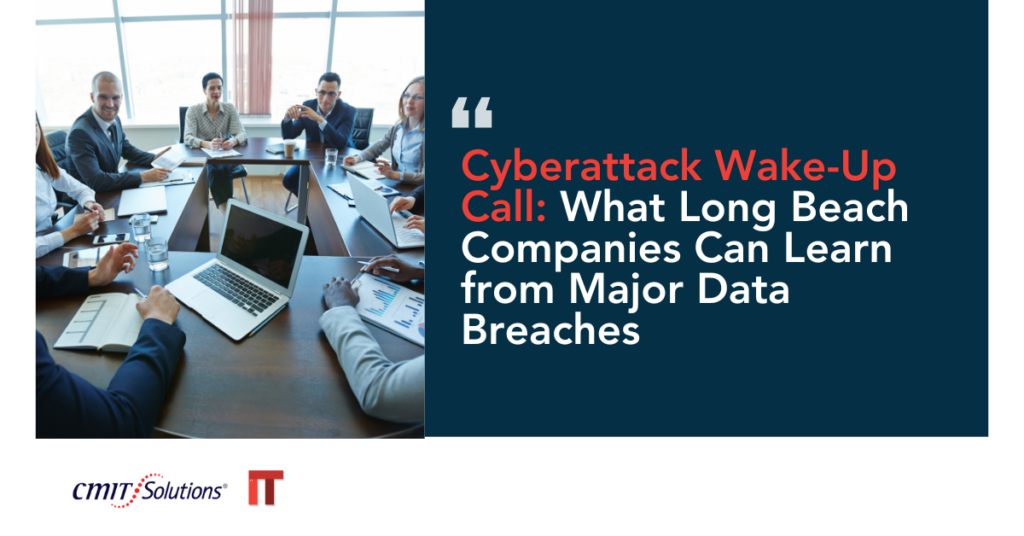In the digital age, where cyber threats are escalating at an alarming rate, businesses must evolve from traditional security models to a more rigorous and adaptive approach. One model that stands out as the new benchmark in cybersecurity is the Zero Trust architecture. For companies in Long Beach and beyond, Zero Trust has rapidly shifted from a theoretical framework to a practical necessity.
CMIT Solutions of Long Beach understands the changing dynamics of the digital landscape. As threats become more sophisticated, so too must the defenses that counter them. This blog explores why Zero Trust is now considered the gold standard in business security, its core principles, implementation strategies, and how it empowers companies to secure their infrastructure, workforce, and sensitive data.
The Rise of Cyber Threats
Over the last decade, cyberattacks have evolved from simple phishing schemes to state-sponsored espionage, ransomware, and zero-day exploits. Small and mid-sized businesses (SMBs) have become especially attractive targets due to their limited cybersecurity resources. A recent cyberattack wake-up call has highlighted the critical need for proactive and robust defense mechanisms. Zero Trust provides exactly that.
Unlike traditional security models that assume everything inside a corporate firewall is safe, Zero Trust operates on the principle of “never trust, always verify.”
What Is Zero Trust?
Zero Trust is a cybersecurity model that assumes no entity—inside or outside the organization—is trustworthy by default. It requires continuous verification of identities, devices, applications, and services before granting access to network resources.
Key principles include:
- Least privilege access
- Micro-segmentation
- Continuous authentication and monitoring
- Assumption of breach
- Encryption of data in transit and at rest
By implementing these controls, businesses can significantly reduce the attack surface and prevent lateral movement within their networks.
Why Zero Trust Matters for Long Beach Businesses
The business ecosystem in Long Beach is vibrant, diverse, and increasingly digital. Whether you run a healthcare clinic, a logistics company, or a retail store, safeguarding your data and operations is non-negotiable. Cyber threats in Long Beach have become more targeted and damaging.
Key reasons for adopting Zero Trust in Long Beach include:
- Growing cloud reliance
- Remote workforce expansion
- Increased compliance mandates
- High-value data and intellectual property
Core Benefits of Zero Trust
1. Reduced Risk Exposure
Zero Trust significantly limits access privileges to only those who need them. This minimizes potential entry points for attackers and helps in quickly containing any breaches that may occur.
2. Enhanced Data Security
Sensitive data is encrypted and monitored continuously. Whether it’s in the cloud or on-premises, cloud backups and encrypted communication ensure data remains uncompromised.
3. Improved Compliance
Healthcare providers and financial services in Long Beach must adhere to strict regulations like HIPAA, PCI-DSS, and more. HIPAA compliance becomes easier with Zero Trust, as it enables controlled access, audit trails, and encrypted records.
4. Greater Visibility and Control
Continuous monitoring and analytics provide insights into who is accessing what resources, when, and from where. Network management becomes more streamlined.
5. Supports Remote Workforces
With more businesses embracing remote and hybrid models, securing off-site access is crucial. Unified communications and Zero Trust policies allow employees to collaborate securely from anywhere.
The Role of AI and Smart Technology
Artificial Intelligence (AI) plays a pivotal role in enabling Zero Trust. From analyzing behavioral patterns to predicting threats, AI integrates seamlessly with Zero Trust principles.
AI security helps automate detection and response mechanisms. As AI innovation continues to grow, businesses are now able to proactively address threats rather than react to them.
Smart tech is also driving business growth, making it easier to integrate Zero Trust without sacrificing performance.
Choosing the Right Zero Trust Solution
Selecting the right cybersecurity solution involves evaluating options like Managed Detection and Response (MDR), Endpoint Detection and Response (EDR), and Security Information and Event Management (SIEM). MDR and SIEM solutions integrate well with Zero Trust and provide layered protection.
Understanding the fit for your business type is critical, and expert consultation can go a long way in aligning tools with operational needs.
Implementation Steps for Businesses
- Assess Current Infrastructure: Identify existing gaps and assets that require protection.
- Segment Your Network: Divide networks into smaller segments to prevent lateral movement.
- Apply Least Privilege Policies: Grant users and systems the minimum level of access necessary.
- Enable Multi-Factor Authentication (MFA): Add layers of verification to user credentials.
- Deploy Continuous Monitoring: Use advanced analytics and logging to keep an eye on all network activities.
- Educate Your Workforce: Employees are often the weakest link. Awareness training is key.
IT support partners like CMIT Solutions of Long Beach can guide businesses through this transformation with tailored strategies.
Challenges and Misconceptions
- Too Complex to Implement: Many believe Zero Trust is only for large enterprises. However, with the right MSP, it can be scaled for SMBs.
- Reduces Productivity: While stricter controls exist, modern solutions integrate seamlessly to ensure performance is not compromised.
- Too Expensive: With the cost of a single breach potentially devastating, Zero Trust is a worthwhile investment. Plus, IT compliance penalties are an added risk if security is not up to standard.
Beyond Just Cybersecurity
Zero Trust is not just a defense mechanism; it’s a catalyst for transformation. It fosters:
- Digital maturity
- Operational efficiency
- Risk-based decision making
For industries like healthcare, secure IT support and data integrity are vital. Similarly, compliance strategies benefit greatly from Zero Trust implementation.
Future-Proofing with Zero Trust
As businesses in Long Beach continue to innovate and expand, adopting a Zero Trust model becomes not just an option but a necessity. Passkeys are replacing traditional credentials, managed cloud services are becoming the norm, and cloud security is now a foundational requirement.
Zero Trust helps create an environment where security doesn’t hinder growth but enables it.
Conclusion
Zero Trust adoption is more than a trend—it’s the future of cybersecurity. For Long Beach businesses, especially SMBs looking to stay resilient in an evolving threat landscape, the shift to Zero Trust is imperative. It not only protects data and systems but also supports growth, compliance, and technological innovation.
CMIT Solutions of Long Beach is committed to helping local businesses embrace this security paradigm with tailored solutions, ongoing support, and cutting-edge tools. Zero Trust isn’t just a model; it’s your new business enabler.





